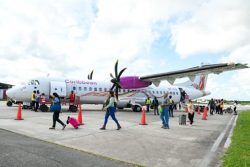Dear Editor,
MARAD Notice to Mariners number 114 dated July 31 2023 was published through the Department of Public Information on 03 August. The Notice covers the arrival and deployment of another of Jan De Nul’s dredgers. Jan De Nul is the 15 percent shareholder in the VEHSI shore base alongside the 85 percent shareholding of NRG Holdings Inc., – a consortium comprising gold miner Andron Alphonso, of ZRN Investment Inc., and Nazar ‘Shell’ Mohammed, of HADI’S World Incorporated; and Nicholas Deygoo-Boyer of National Hardware Guyana Ltd. Jan De Nul had two large trailing head suction dredgers (THSD) to widen and deepen the Demerara Main Ship Channel in 2022, as well as providing much of the basic material for the construction of the VEHSI shore base itself, on which ExxonMobil has taken a 20-year lease.
So why do we now have another dredger, this time the water injection vessel ‘Henri Pitot’? Jan De Nul has an informative video lecture on how water injection dredgers work; https://www.jandenul.com/fleet/water-injection-dredgers. When the channel bottom and surrounding area is composed of compacted material, such as the hardened mud banks transported by the Guiana Current from the estuary of the River Amazon, the previous THSDs could not break up that substrate. Now comes the ‘Henri Pitot’ to inject water at high pressure into the compacted mud. And what will happen to the fluidised mud? VEHSI does not want it, so the dredger brushes and flushes the material into the outgoing stream from the estuary of the Demerara River.
And where will that fluidised mud end up? On the traditional grounds of the artisanal fishermen? And has there been an Environmental Impact Assessment exercise in which the fishermen can protest and demand compensation? Editor, your journalists can obtain a one-word answer from our national defender, the Environmental Protection Agency.
Sincerely,
Janette Bulkan





